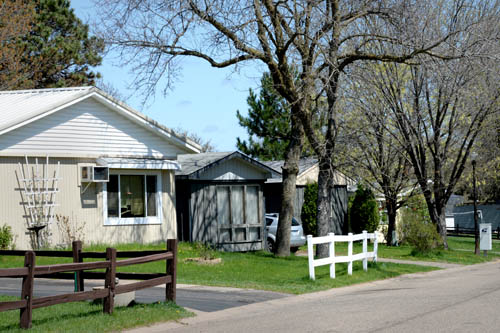Manufactured housing—often called “mobile homes”—is a valuable source of housing for very low- and extremely low-income households. But its future is at risk.
Number of housing parks declining
Manufactured housing parks are threatened by redevelopment, improvements of adjacent highways, and their own aging infrastructure such as sewer and water. No new parks have been built since 1991, and 10 parks have closed since then.
Why manufactured housing is valuable
- Affordable to lowest-income households
- Opportunity for homeownership—90% rate is higher than for other types of housing (74%)
- An alternative where publicly subsidized housing is scarce (typically in suburban areas)
- Park locations usually located in high-performing school districts
- 84% of parks within 5 miles of job and activity centers
- Parks can be potential sites for social services to low-income people living in suburbs
That’s according to a new report, “Manufactured Home Park Preservation Project,” compiled by Council staff and recently presented to Council board members.
Contrary to common perceptions, manufactured housing units are not really mobile. They’re typically difficult or impossible to move because they often lack sufficient structural integrity, or the cost of moving them often exceeds a unit’s value. So when parks close, many residents lose their homes instead of being able to relocate to another park.
More than half of residents displaced by park closures are people of color
In addition, park closures can disproportionately affect households of color. While these households represent 10% of manufactured home park residents in Minnesota, they account for more than half the residents displaced by park closures.
“The future of manufactured housing parks affects the most economically disadvantaged families in the region, so that makes it an important equity issue,” said Freya Thamman, Metro Council planner and co-project manager for the study and pilot program.
“The report explores a number of policy considerations that the Council can examine further to help preserve manufactured housing parks,” Thamman said. “Plus, there can be extra advantages that benefit the environment and water quality.”
Council to consider several policy options
 The Council could approach the challenge from one for more angles, including wastewater and housing. For example:
The Council could approach the challenge from one for more angles, including wastewater and housing. For example:
-
Reducing the Council’s charges for connecting to the regional wastewater system (sewer access charge, or SAC) to reflect the lower wastewater flows from manufactured housing compared to those from a typical residential unit.
-
Expanding the Council’s program for deferring hookup charges to the regional wastewater system for up to 10 years. The program, which currently applies only to small businesses, offers a deferral of 80% of hookup charges.
-
Continuing to allow parks already connected to the regional wastewater system to be eligible for grants to reduce clean water flowing into the system from uncapped entry points or leaks through cracks in underground sewer pipes (inflow and infiltration).
-
Explore investing in a Manufactured Home Park Infrastructure Fund to help improve water quality, reduce inflow and infiltration, and preserve manufactured parks by addressing their capital needs.
-
Explore types of proposals that manufactured home parks could include in an application for funding under the Council’s Livable Communities grant program.
-
Consider expanding the Council’s pilot program, which helps defray the cost of hooking up one manufactured housing park to the regional wastewater system, to include other unsewered parks.
“At this point, these are ideas for the Council to look at more closely,” said Council planner Jonathan Stanley, co-project manager. “The Council will be considering how to move forward in the coming months.”
A new MetroStats report, “A Resource at Risk: The Twin Cities Region’s Manufactured Housing in 2015,” provides a snapshot of manufactured housing in the Twin Cities region and the development trends that may affect its future.